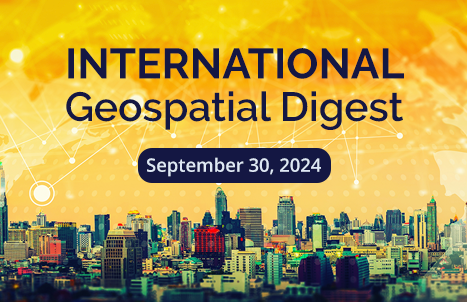Canadian 2021-22 Geospatial Pandemic Survey: The results are in
The results of the GoGeomatics pandemic survey ready to be revealed. What difference a year makes?
Who did GoGeomatics Survey?
The audience for the survey are subscribers to GoGeomatics magazine and newsletter, and those who follow on social media. Many of the readers (over 85%) are working professionals and managers. The first survey was done in November, 2021, followed by a second survey in October, 2022.
Why did GoGeomatics do the Surveys?
GoGeomatics Canada conducted this survey to ascertain the difference a year can make within the Canadian geospatial community towards work, engagement and COVID. After the pandemic, GoGeomatics wanted to see if there was any sign of recovery in the community, and what was the result of the pandemic on those surveyed.
Results for each Year
In November, 2021, the majority of those surveyed were working professionals or managers, and most were working in the public sector. The highest percentage of work type was in GIS and remote sensing, followed by surveying and engineering. With a slight worry about COVID, most were working from home, and more than half surveyed thought things were getting worse. Employers and businesses were doing what they could, but stress about the whole situation was a main concern. There was almost an equal number of those surveyed between not working from home, and those who worked from home but still had to go into the field. Almost half were enjoying commuting less, followed by seeing family more. When it came to attending online events, people were extremely willing to participate.
One year later, in October 2022, more working professionals and managers took the survey over job seekers and students, and an equal amount worked in the public and private sectors. GIS and remote sensing were still top jobs, with an increase in surveying and engineering. Anxiety and stress due to COVID dropped noticeably. More people were working from home, and hybrid-type work (work from home as well as office) made an increase, with many believing things are getting better. Almost half of those surveyed said their life and work were affected by the pandemic. The love of less commuting stayed level with the response from the previous survey. October, 2022, survey participants were still eager to participate in online events, from 25.6% last November, to 72.4% a year later.
What Difference did one Year Make?
From the survey results, online events are much more accepted now, than a year ago. Perhaps this overwhelming response to attending events online shows how we have come to understand and enjoy the benefits of such events. Statistics Canada published an article, COVID-19: A Data Perspective, which discussed how Canadians have adapted to live with Covid-19, and though there are still worries about finances, health impacts and jobs, there is a decrease. This backs up the survey results showing the worry of COVID is fading, and the stress of the whole situation is dwindling for most. Online events are still the safest, and many times most affordable, way to go for many.
People are loving having to commute less, and have time for family and friends. There has been a significant rise in surveying and engineering work, as well as management and science, teaching, and research jobs. In an article published by Centers for Disease Control and Prevention titled, Geospatial Perspectives on the Intersection of Chronic Disease and COVID-19, the increase of many of these types of jobs comes from us learning that interdisciplinary collaboration is needed from the areas of public health, social sciences, and GIS & Technology for practice, teaching, and research.
When it comes to working from home or in an office, it seems hybrid work situations are on the rise. More people are working from home than a year ago, but many are returning to the office as well. Hybrid situations allow work from home, with a few days, or occasional visits to the office.
The results of the GoGeomatics Survey and supporting articles show people are ready to move on from the pandemic, but they want to be prepared for the future. ESRI has published a book, Learning from COVID-19: GIS for Pandemics, which discusses how the public is ready to move forward while being prepared for future health situations. GIS can assist with strategies and workflows among other things.
Overall, it is easy to see the geospatial community has a role to play in the post COVID-19 world. The comeback may be slow, but steady. Collaboration and sharing information is the key to future success.







